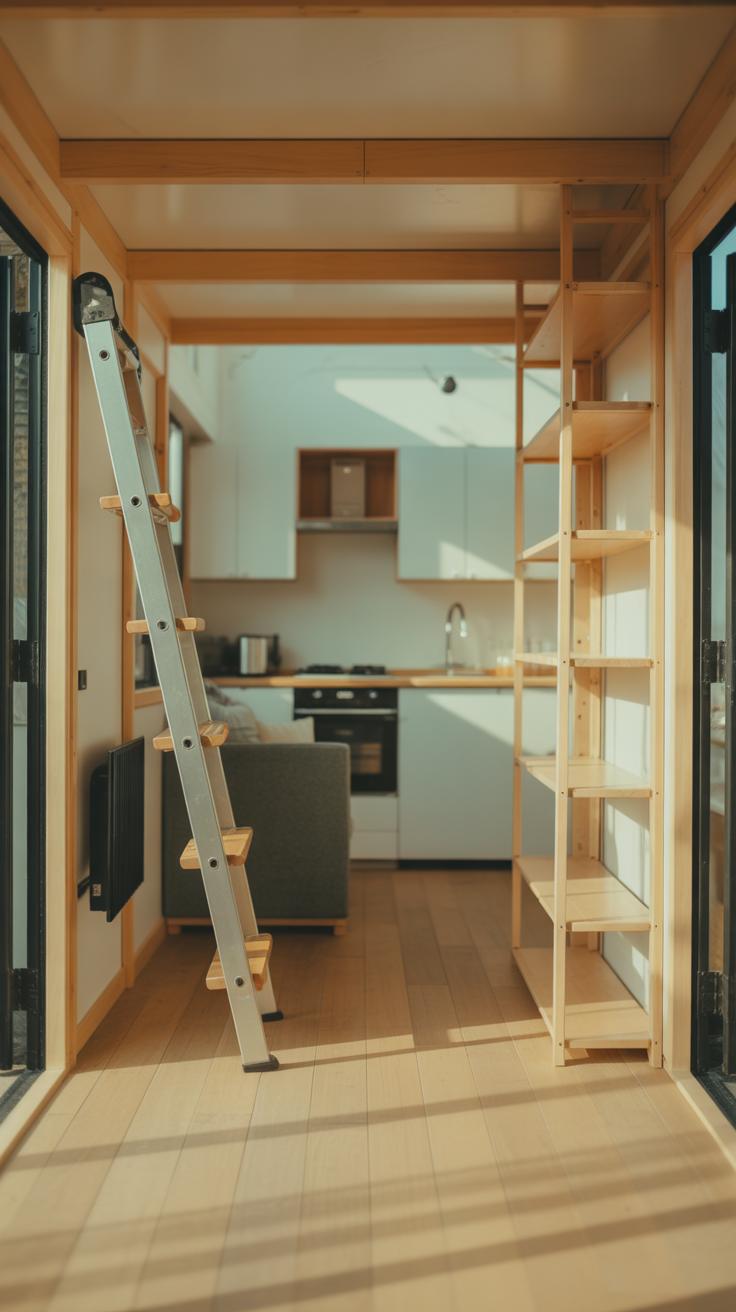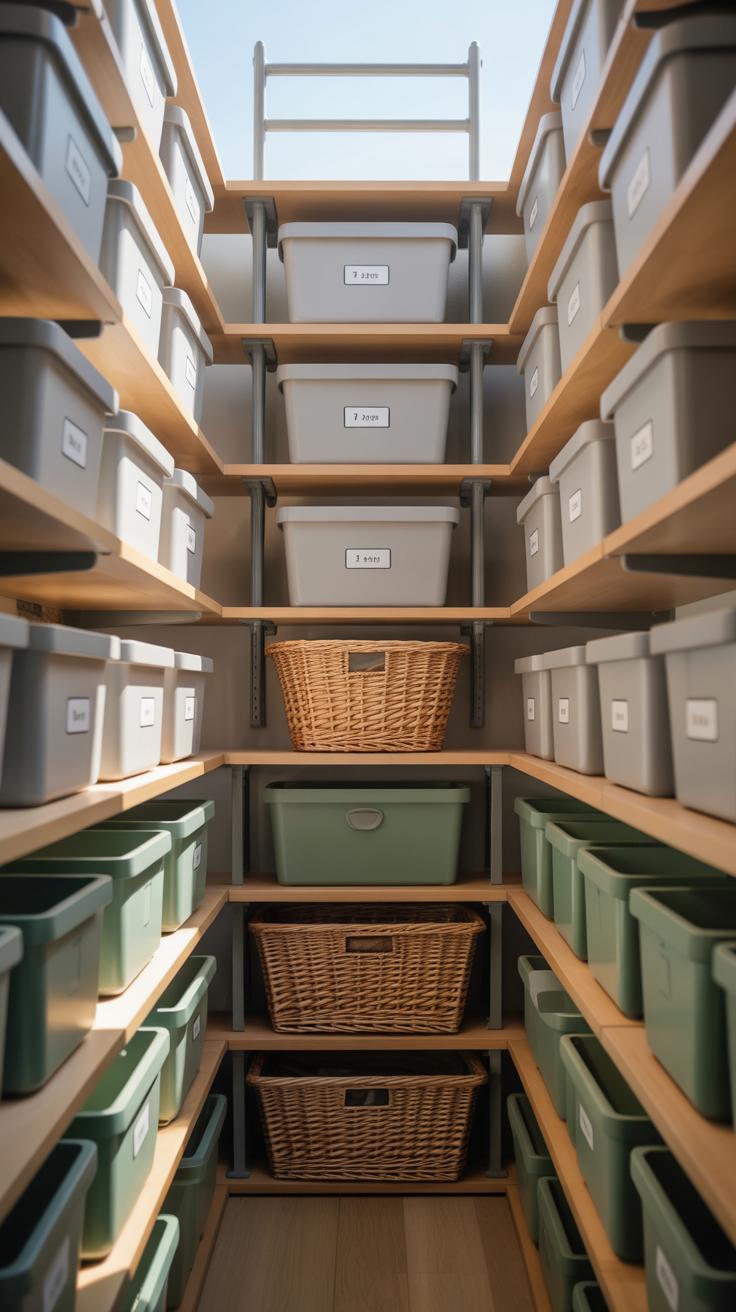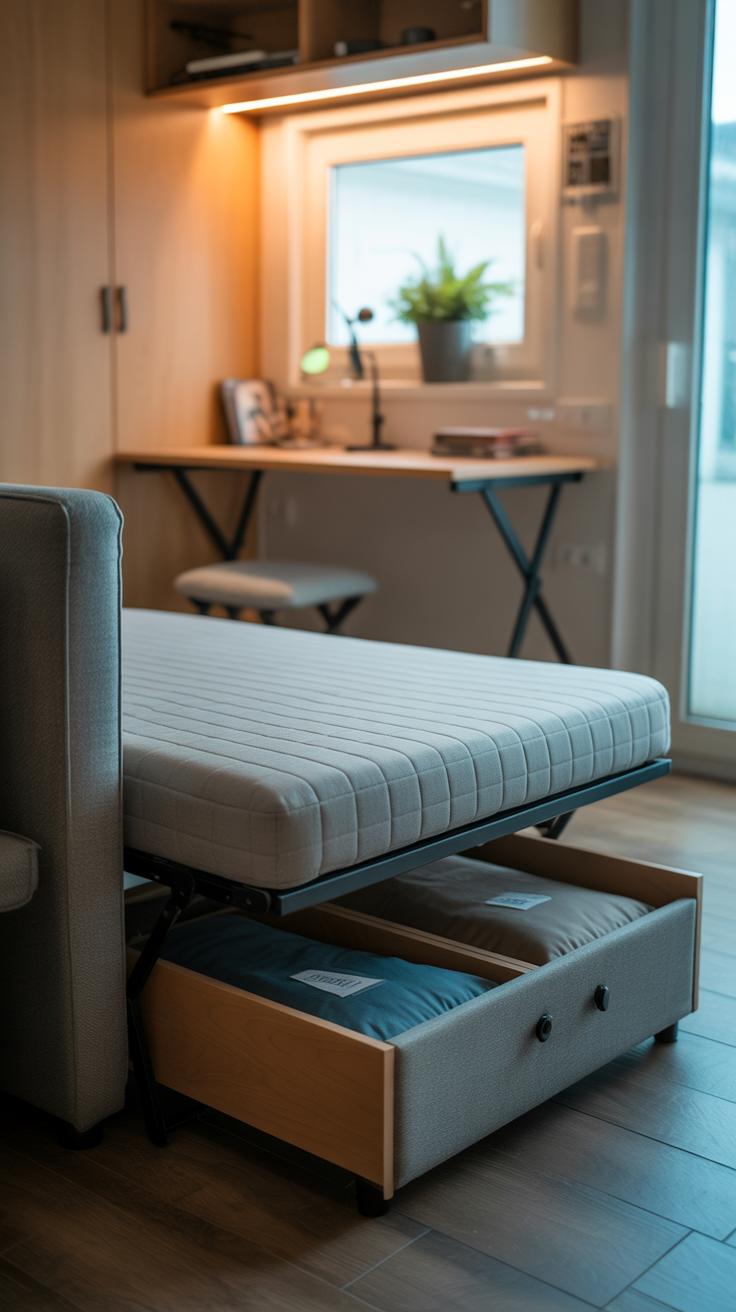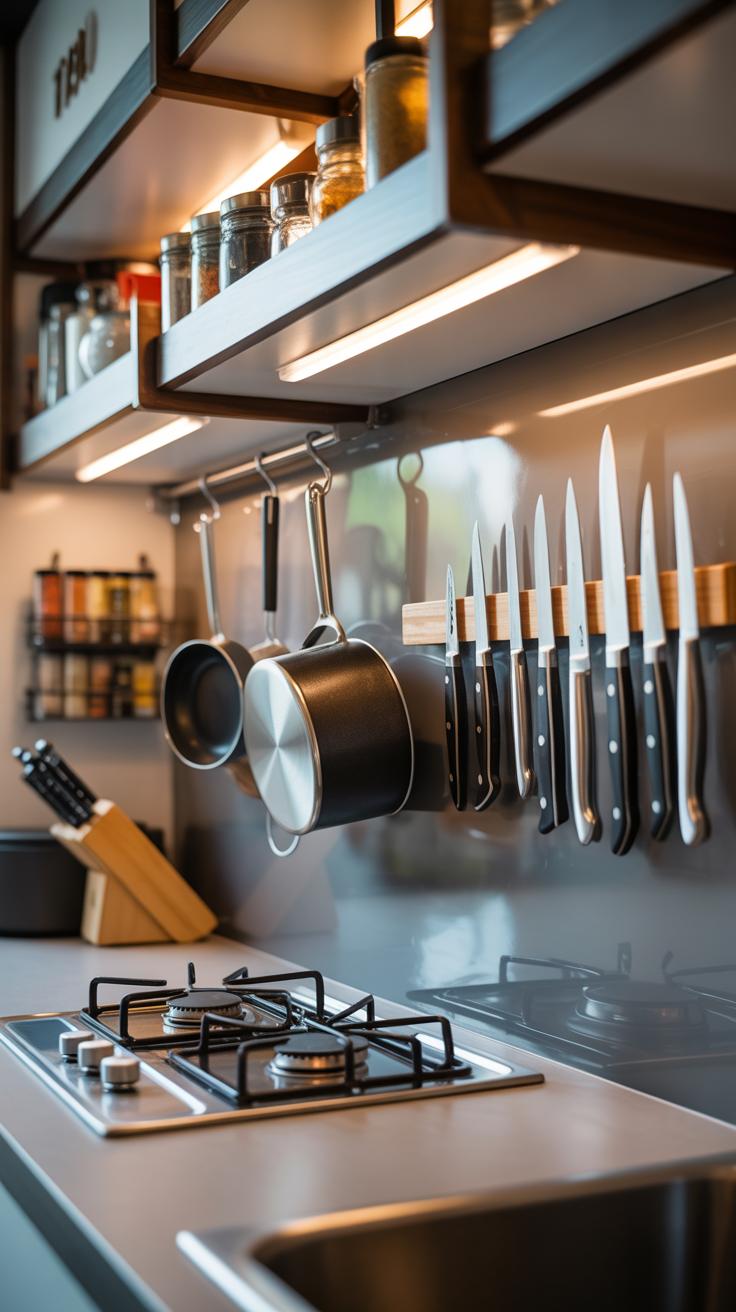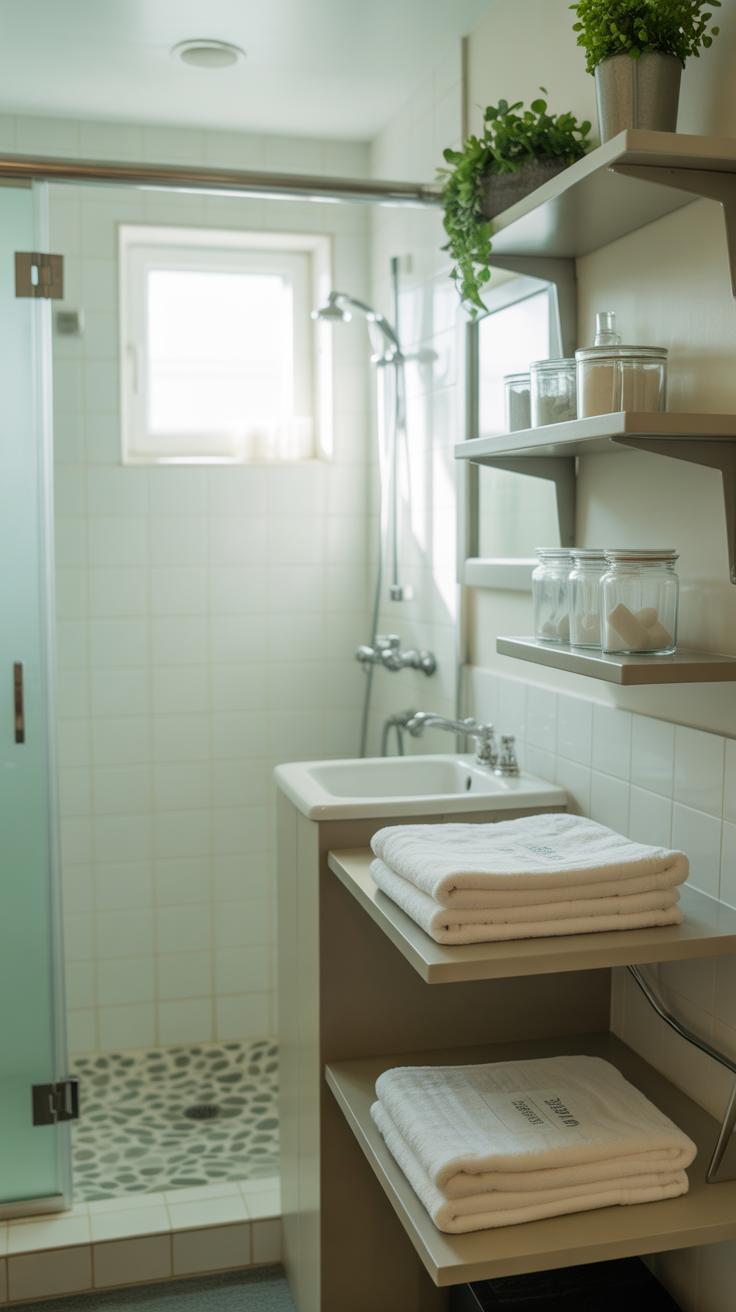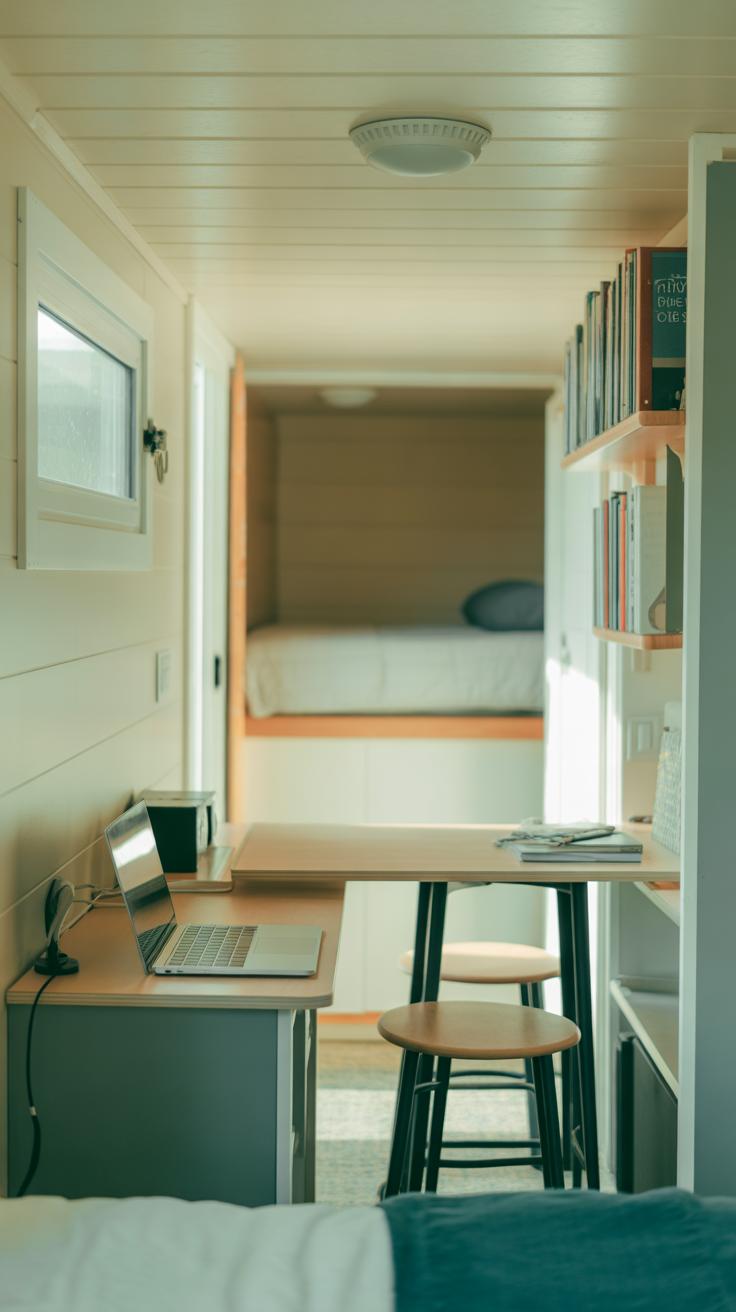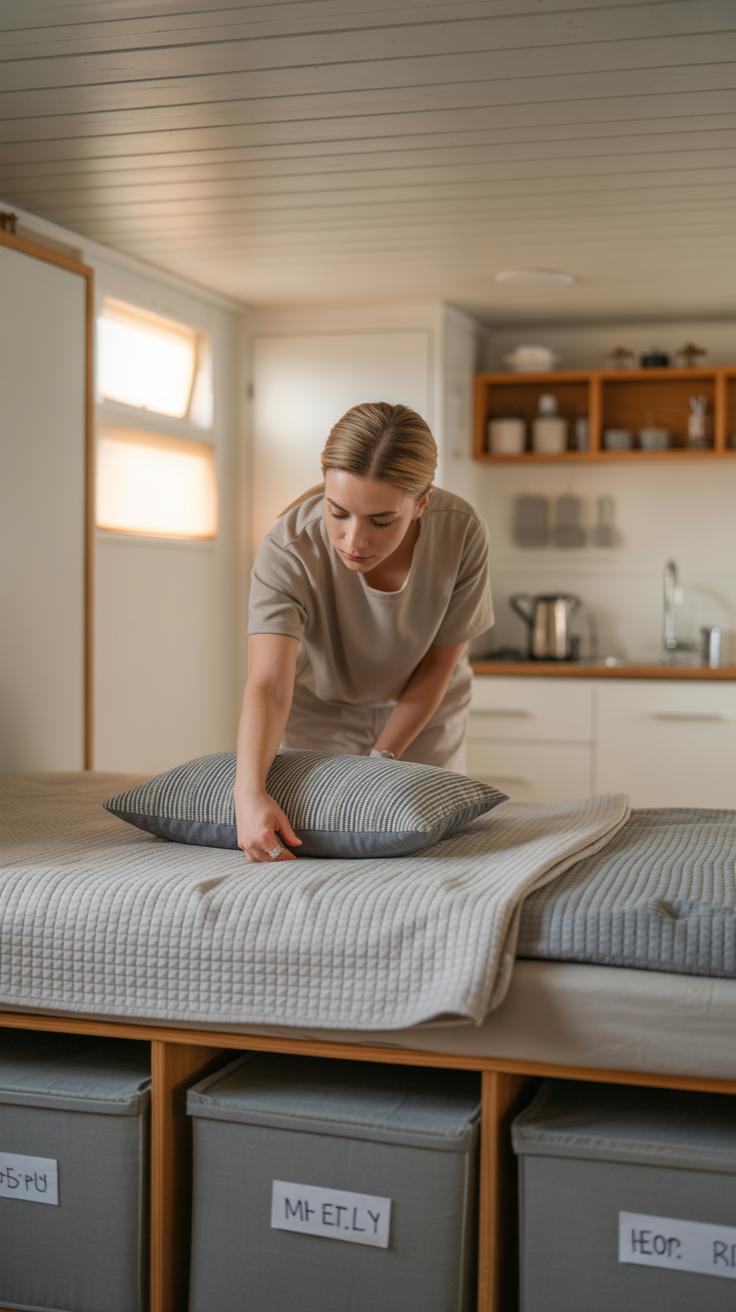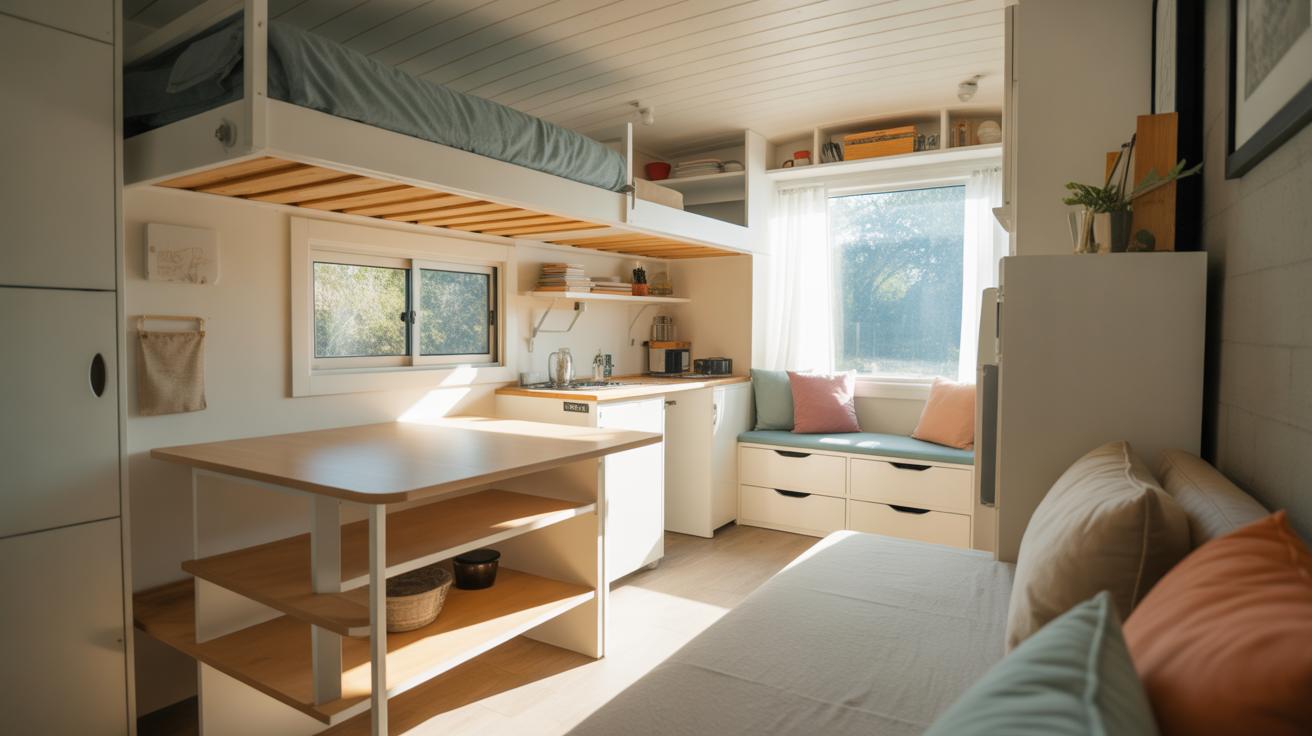
Effective Small Space Organization Techniques For Tiny Homes
Introduction
Living in a tiny home means dealing with limited space every day. Your small space organization needs to be smart and effective to keep your home neat and comfortable. Effective Small Space Organization Techniques For Tiny Homes help you use every inch wisely, so your tiny home feels roomy and enjoyable.
This article explores simple yet powerful ways to organize your tiny home. From clever storage ideas to choosing the right furniture, you will learn how to solve common space problems. Whether you are new to tiny living or want to improve your current setup, these techniques will guide you.
Understanding Your Space
Before you start moving boxes or buying storage bins, you need to get a clear sense of your tiny home’s layout and dimensions. It’s easy to think you know the space, but precise measuring reveals surprises. Maybe your living area isn’t as square as you assumed, or a nook near the kitchen could be perfect for a shelf.
Take time to measure every room, wall, even awkward corners. Use a tape measure or a laser measurer if you have one—both work fine. Write down the length, width, and height. Don’t forget to note features like windows, doors, and built-in furniture. These impact what storage solutions will fit.
Sketching a simple floor plan on paper or with an app can help visualize. This way, you see where furniture goes and where empty spots wait to be claimed. It also helps prevent overestimating your free space, which is a common mistake.
Once you have a map, start identifying problem areas. These often include underused corners, narrow hallways, or spaces that tend to fill up with random stuff. Maybe your entryway gets cluttered with shoes, or the countertop quickly fills with mail. Write down these trouble spots. Noting them makes it easier to focus your organizing efforts later. You’ll want to tackle those stubborn clutter hotspots first—or at least plan storage options with them in mind.
Decluttering Before Organizing
Before you start squeezing boxes into every nook or investing in fancy organizers, you really need to clear out the stuff you don’t need. I mean, the truth is, you can’t organize what you shouldn’t keep in the first place. Tiny homes demand this step more than bigger spaces—it’s a tight squeeze, so every item matters.
Try these steps to declutter without feeling overwhelmed:
- Set a timer. Give yourself short bursts, like 15 or 20 minutes for each area.
- Use the three-box method: one box for keep, one for donate, one for toss.
- Be honest with yourself. If something hasn’t been used in six months and holds no sentimental value, it’s probably safe to let go.
- Ask yourself if each item adds practical or emotional value.
Once you clear out excess, organizing feels less like a puzzle and more like a natural fit. And honestly, your space will breathe a bit easier, maybe even you will, too.
Sorting Through Your Belongings
Deciding what stays and what goes isn’t always clear-cut. Sometimes you think you need that extra kitchen gadget until you realize it just collects dust. Sometimes sentimental items sneak back in despite your better judgment.
Try to sort like this:
- Keep: Items you use regularly or that genuinely add happiness.
- Donate: Things in good shape that others might find useful.
- Discard: Broken, outdated, or things that have lost their meaning.
It’s okay if the line between these categories is blurry. I’ve found that revisiting this process a few times helps. Sometimes you change your mind as you go.
Creating a Declutter Routine
Getting rid of stuff once feels great, but the real challenge is keeping clutter from sneaking back inside. So, build a habit of quick declutter sessions.
- Try a weekly five-minute scan through your space—put away stray items, toss junk mail, or quietly consider what no longer fits your lifestyle.
- Every month or so, ask yourself if what’s on your shelves or counters still belongs.
- When new things enter your home, think about what they might replace or whether you really need them.
By keeping this small routine, you can avoid that “too much stuff” feeling creeping back. And oddly enough, it makes you more mindful about what you bring in next time.
Using Vertical Space Smartly
When living in a tiny home, the walls around you become more than just boundaries—they turn into potential storage. Using vertical space is often overlooked, but it can really open up your room by freeing up the floor. Think of it as extending your storage upward instead of outward.
Shelves placed high on walls can hold items you don’t need every day—like books, seasonal gear, or extra kitchen supplies. The key is choosing sturdy shelves and installing them where you can reach without a ladder but still keep things off the floor. I remember trying to cram everything low and ended up with clutter everywhere; once I added shelves above eye level, it felt like I’d suddenly doubled my space.
Hooks are another way to take advantage of vertical space. Placing hooks near the entrance for coats, bags, or keys keeps these items easy to grab and off surfaces. In the kitchen, hanging storage can hold utensils, mugs, or even pots. A row of hooks under a shelf or on an empty wall can do wonders. Plus, it’s flexible—you can swap out or add hooks anytime.
Other ideas include wall-mounted racks for spices or cleaning supplies, pegboards for tools or craft materials, and even hanging baskets to store lightweight items. These solutions mean you’re not using your precious floor for storage, which can make small rooms feel less crowded—though sometimes, too many hooks or shelves might backfire, creating visual clutter. So, there is a bit of a balance to strike, which might take some trial and error.
Have you tried using vertical space in your tiny home yet? If not, start small—maybe with a couple of hooks or a single shelf—and see how it changes your daily routine. You might find it easier to keep things tidy when everything has its place above rather than piled below.
Choosing Multifunctional Furniture
When your living space is tiny, every piece of furniture has to do more than just look good or sit there. You want items that pull double duty—maybe even triple duty—because saving floor space can make a big difference in how your home feels. It’s not just about fitting stuff in; it’s about making room for the things that matter without feeling cramped.
Think about a sofa that can transform into a bed for guests instead of adding a separate guest room, or an ottoman that hides blankets and doubles as extra seating. These kinds of pieces stop your small home from turning into a clutter zone. They offer flexibility without demanding extra space.
Examples of Multifunctional Pieces
Some furniture has earned its place in tiny homes by proving practical over and over. Here are a few to consider:
- Sofa beds – Perfect if you occasionally need a sleeping area without sacrificing daytime comfort.
- Storage ottomans – Great for hiding things you don’t want out in the open but need close by.
- Fold-out tables – They can compact into a small footprint but open up to function as a dining or work table.
- Bed frames with drawers underneath – This sneaky storage spot is often overlooked but so useful.
- Stacking or nesting chairs – When you don’t need them, they disappear almost completely.
These items can shape your room’s function on the fly, which is what tiny living demands.
DIY Multifunctional Ideas
If you’re into handy projects, DIY furniture can save money and fit your space’s quirks perfectly. You could create a bench with hidden storage by adding a hinged top—simple but effective. Or maybe build a small coffee table with shelves underneath for books and magazines. Even attaching a fold-down desk to a wall can turn an empty corner into a work area without clutter.
Sometimes, a DIY project isn’t about inventing something entirely new but tweaking existing pieces. Adding casters to a storage box transforms it into movable furniture. Or combining a shelf with hooks below offers both storage and hanging space.
What small spot in your home could become more useful with a second function? It’s worth wondering where a little fix or a new piece could open up room you never thought you had.
Optimizing Kitchen Organization
Your tiny kitchen might feel cramped, but organizing cabinets and drawers well can change everything. Think about adding racks inside cabinet doors for spices or small jars. Those little pockets of space often get ignored but can hold way more than you expect.
Dividers inside drawers help keep utensils and tools tidy, avoiding the usual mess where you lose track of things. Pull-out shelves are another great idea—they give you instant access to items at the back without having to move everything around. Imagine not rooting through a deep cabinet every time you need that baking dish.
Keeping countertops uncluttered is key. If you struggle with too many gadgets lying around, consider wall-mounted holders or magnetic strips for knives. That way, your workspace feels larger and more inviting.
For the pantry, containers with clear labels make a big difference. They keep similar items together, and you can spot what you need quickly. I find that uniform containers stack better, saving precious shelf space. But, honestly, sometimes the shapes don’t line up perfectly, and that’s okay—you learn to work around it.
Have you tried dedicating specific shelves for categories, like grains on one and canned goods on another? It might seem a bit rigid, but it cuts down on the chaos when cooks like me are in a hurry.
Maximizing Bathroom Space
Bathrooms in tiny homes can feel tricky—there’s often barely enough room to move around, let alone store things. But some clever storage choices can make a real difference. For example, corner shelves are a small addition but they open up space that usually goes unused. You can tuck shampoo, soap, or small towels there, keeping counters clear. I once installed a few slim caddies on my shower walls, and those instantly held all my daily shower stuff without cluttering the tub edges.
Medicine cabinets play a big role too. They keep medicines, skincare, and toothpaste handy but hidden, which helps keep surfaces tidy and less overwhelming. You might hesitate about installing them if your bathroom has limited wall space, but a shallow cabinet with a mirror doubles up the use nicely.
Now, about keeping essentials within reach without mess—there’s a balance. I find it’s best to limit what you store out. Think about what you really grab daily. A small, dedicated basket or tray on the sink often works better than spreading everything out. That way, you know exactly where things are, but it feels less chaotic.
Consider these points:
- Use vertical or corner spaces for added storage
- Choose storage with dual purposes, like mirrored cabinets
- Keep only daily essentials in easy reach, store extras elsewhere
- Try small trays or caddies for organizing items on counters
Does your bathroom feel cramped or just cluttered? Sometimes, these small tweaks change how the whole space works for you.
Smart Closet and Clothing Organization
When space is tight, your closet quickly becomes a battleground between necessity and clutter. You can’t just shove things in and hope for the best. Instead, using space-saving hangers and organizers can make a real difference. Thin, velvet-covered hangers take up less room and prevent clothes from slipping off, letting you hang more without overcrowding. Multi-tiered hangers are also useful—for pants, scarves, or ties—helping you stack vertically rather than spreading out.
Bins and drawer organizers come in handy too. Clear bins let you see what’s inside without rummaging, which is handy when every inch counts. Hanging shelves or over-the-door organizers create spots for shoes, bags, or accessories, freeing up floor and shelf space.
One thing I’ve found helpful is rotating seasonal clothes. When you tuck away summer clothes in a separate bin or under-bed storage, the closet feels less overwhelming. Pulling out warm layers only when needed keeps the closet lighter and easier to navigate. The tricky part? Sometimes you need something “out of season,” which can mess up your rotation—but it’s a trade-off worth trying.
Have you tried grouping your clothes by type, or even color? It might seem like extra work, but it can save time and reduce frustration in tight spaces. It’s a system worth tweaking to fit your habits and wardrobe size.
Creating Zones for Different Activities
In a tiny home, carving out distinct spaces for sleeping, working, and relaxing can help prevent chaos. When you mentally and physically divide your area by purpose, it becomes easier to keep things in place. Think about it: if your workspace is separate, even just a little, it discourages clutter from creeping into your relaxation spot or bedroom.
Separating Areas Without Walls
Walls aren’t always an option, and honestly, they can make a tiny home feel even smaller. Instead, use rugs to outline different zones; a colorful or textured rug can signal a shift from one area to another. Furniture also works—like positioning a bookshelf or couch so they act as dividers.
Curious about curtains? They’re surprisingly handy. Hanging a light curtain around your bed or office nook creates a sense of privacy that’s flexible. You can pull it closed or open it up, which is perfect when space is limited but you want distinct areas.
Keeping Each Zone Organized
Once you’ve set the zones, keeping each tidy takes a bit of routine. I find it helps to assign specific storage containers or baskets for each area—one for office supplies, another for bedroom essentials, and so on. That way, it’s clear where things belong.
Also, simple habits go far. Spending five minutes at the end of the day sorting through each zone can prevent the whole place from feeling overwhelmed. Maybe it’s too much to be perfect, but making a little time daily to reset a zone really makes a difference.
Maintaining Order Every Day
Daily Cleaning and Tidying Habits
Keeping a tiny home tidy doesn’t demand hours every day—just small, consistent actions. You might find that spending five to ten minutes each morning or evening on quick tasks makes a surprising difference. For example, washing dishes right after meals or wiping down kitchen surfaces can prevent buildup that feels overwhelming later. I often think about how just putting things back where they belong immediately saves time and stress.
Try simple habits like:
- Making your bed every morning—even if it’s just a quick straighten.
- Clearing off countertops and tables before you end the day.
- Doing a quick sweep or vacuum of high-traffic areas, especially if you live with pets or kids.
- Handling mail or packages right away to avoid piles forming.
These habits might seem trivial, but in a small space, they add up. You’ll find your home feels calmer, even if it’s far from spotless.
Weekly Organization Checks
Once a week, spend a moment reviewing your small space with fresh eyes. This doesn’t have to turn into a deep clean, but more like a checkpoint. Ask yourself: Is there a surface gathering random stuff? Are there items that no longer belong in their zone? If you’ve bought something new, has something old been moved out?
A quick walk through rooms, especially the zones you created before—bed, work, relax—helps you catch little clutter before it grows. For example, I sometimes notice a pile of books or papers that snuck into the living area, and tackling those weekly saves those wild piles from becoming permanent fixtures.
Setting a weekly reminder can help this habit stick. Think of it as pressing ‘reset’ on your space, keeping it livable and comfy—without the need for major overhauls.
Conclusions
Small space organization in tiny homes is about making thoughtful choices to fit your lifestyle and needs. Using vertical space, multi-use furniture, and smart storage can transform your tiny home. With these techniques, you can enjoy your home without feeling cluttered or cramped.
Remember, organizing small spaces takes planning and creativity. You can keep your tiny home clean and functional by applying the ideas in this article. Your tiny home can be your perfect, cozy space when you make each inch count.

